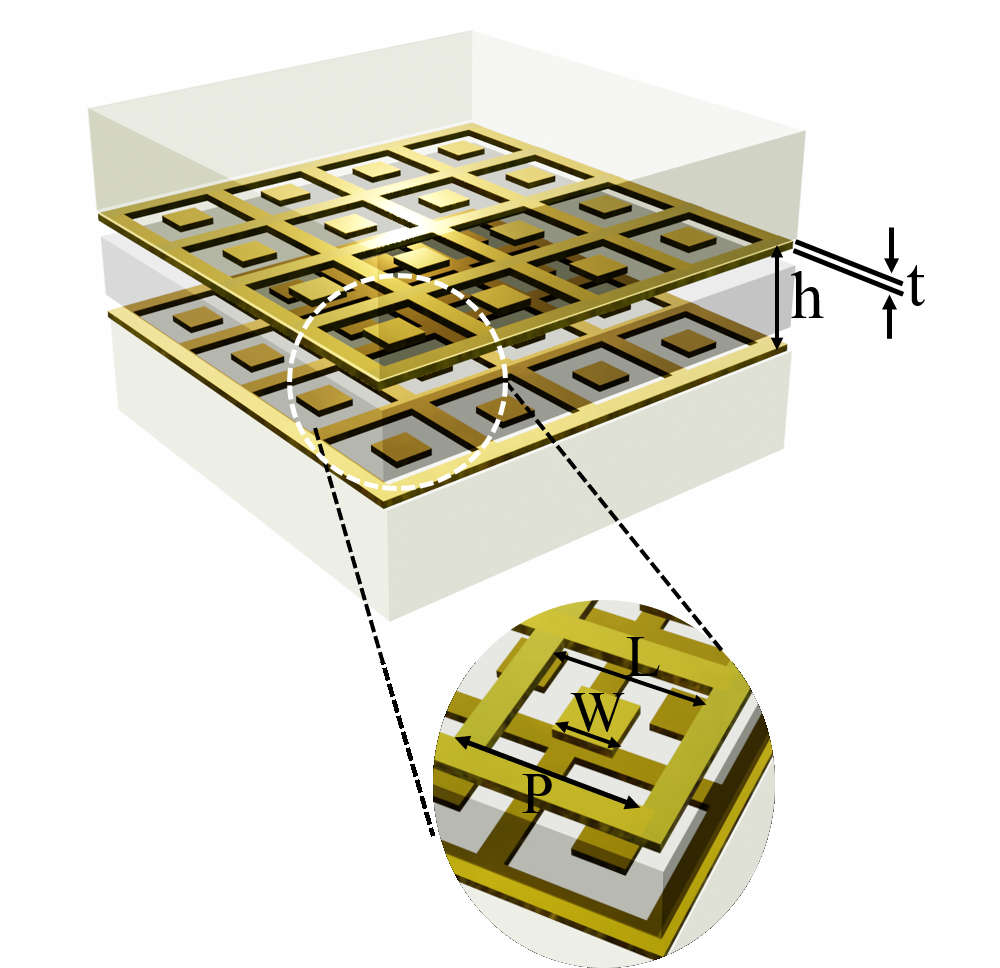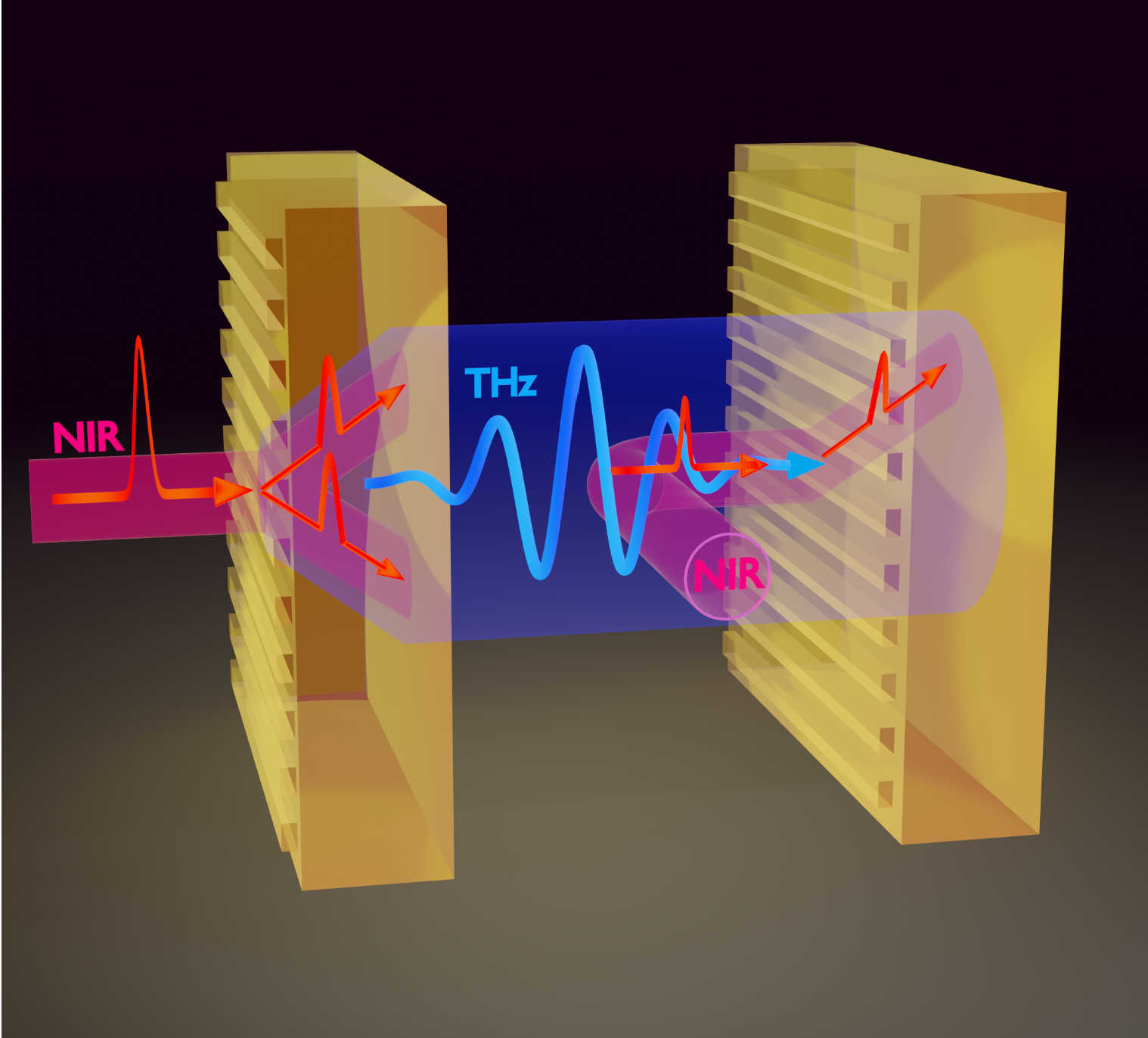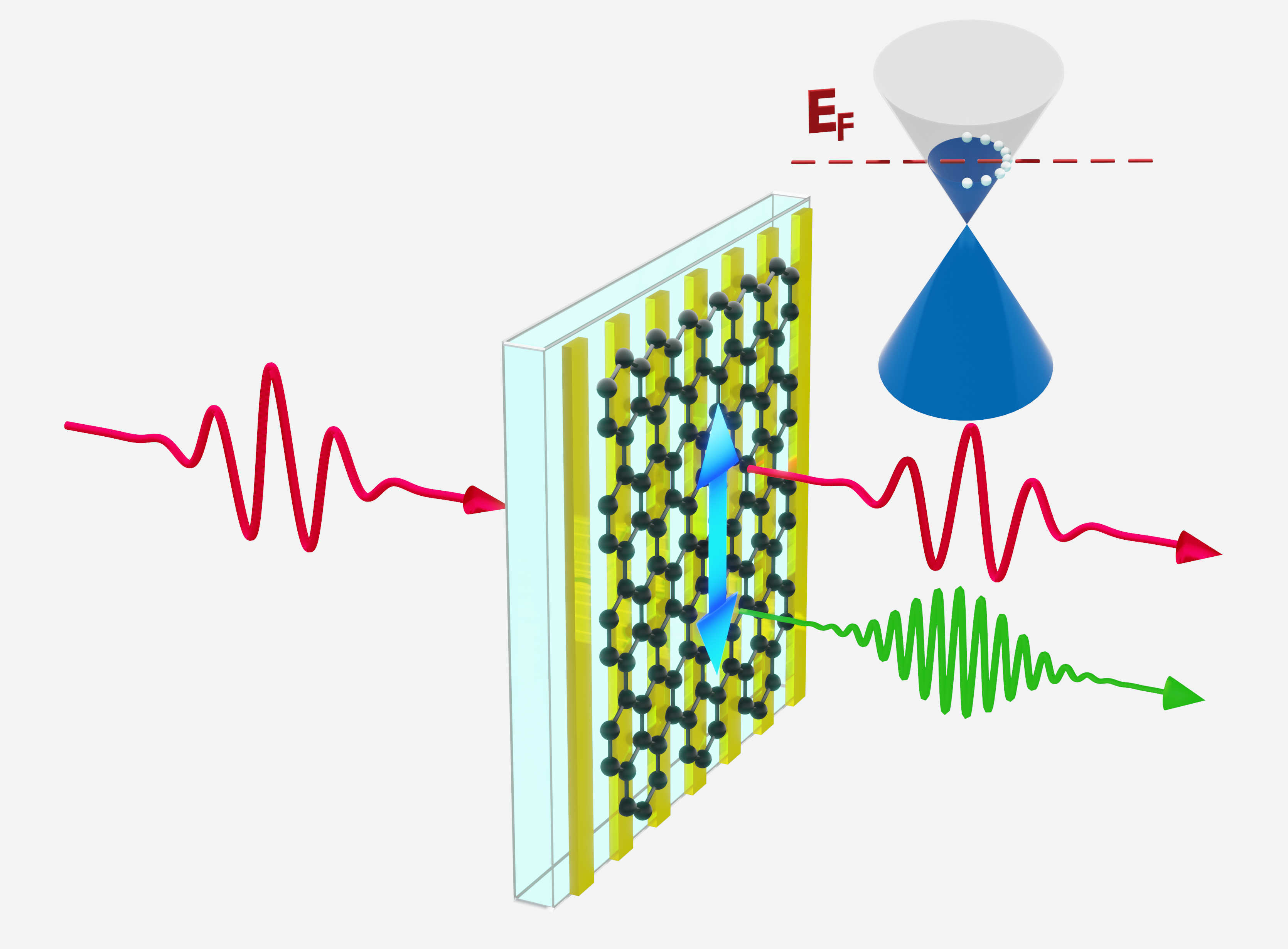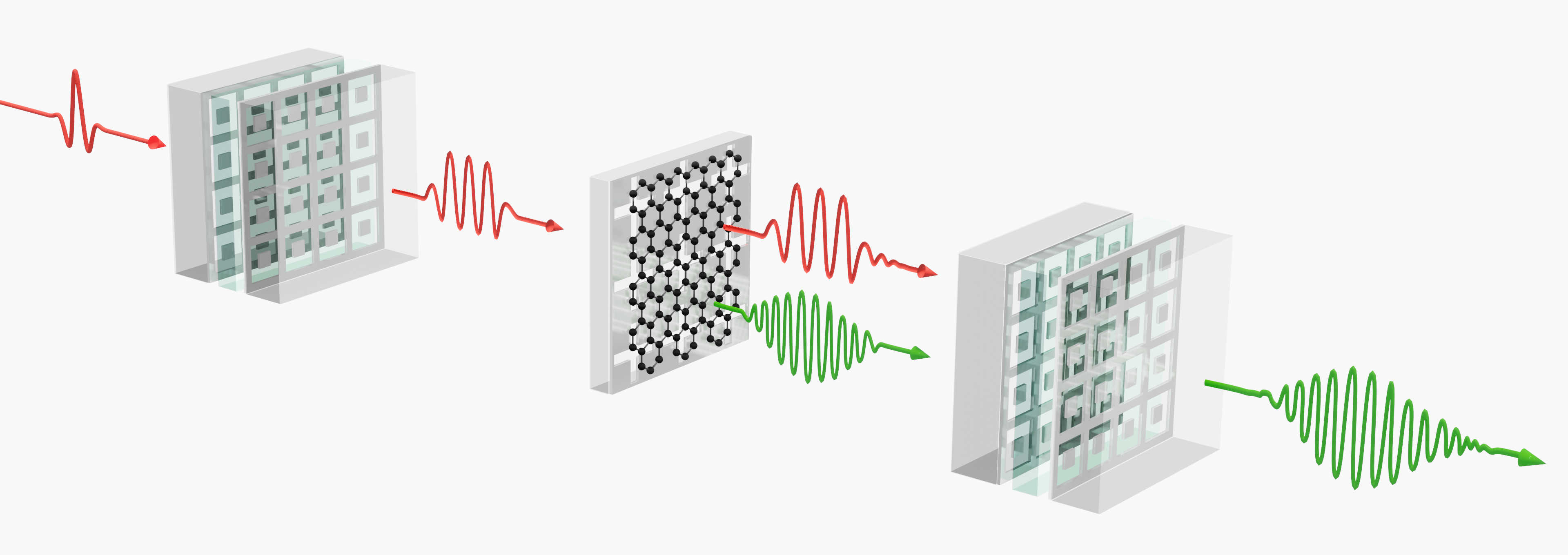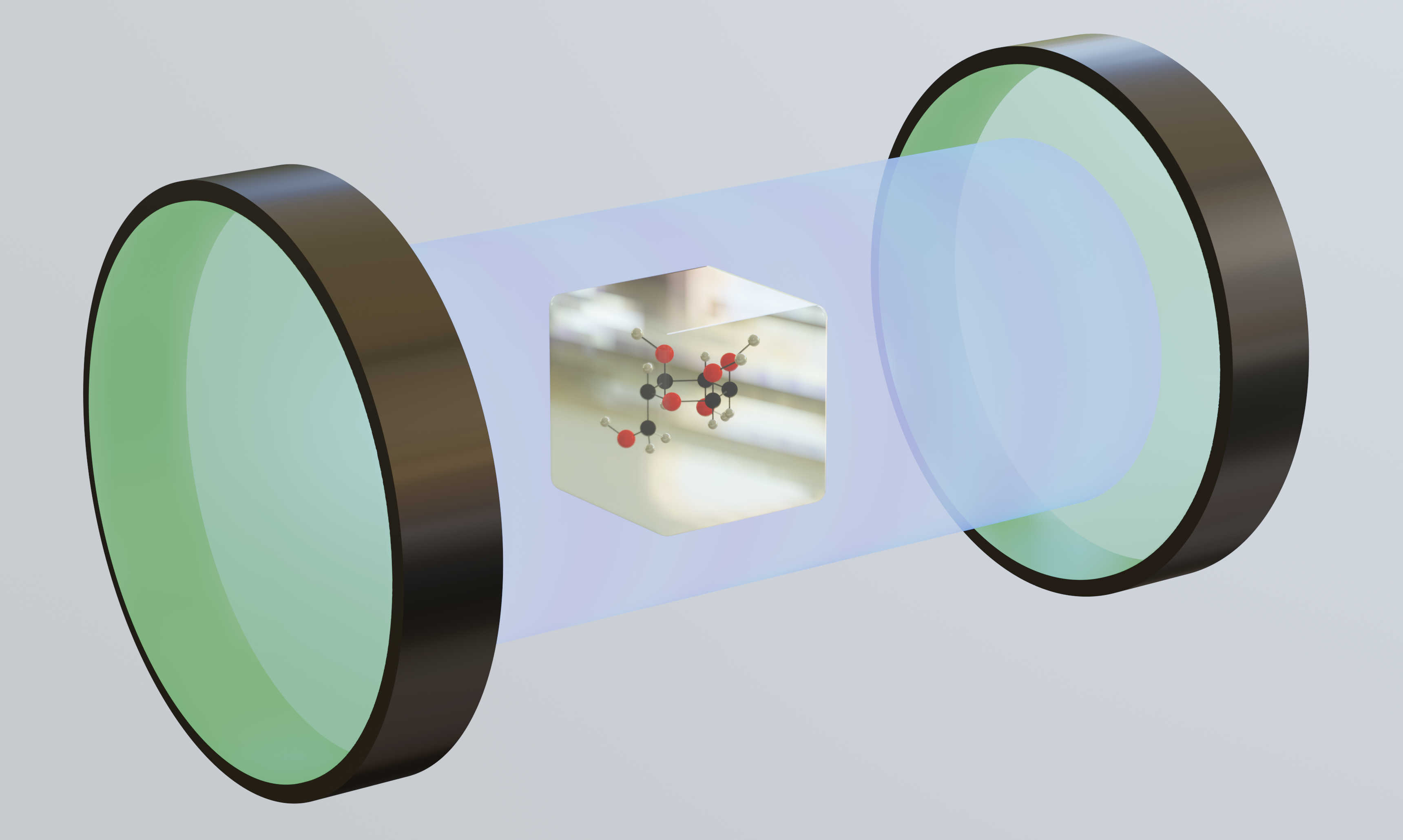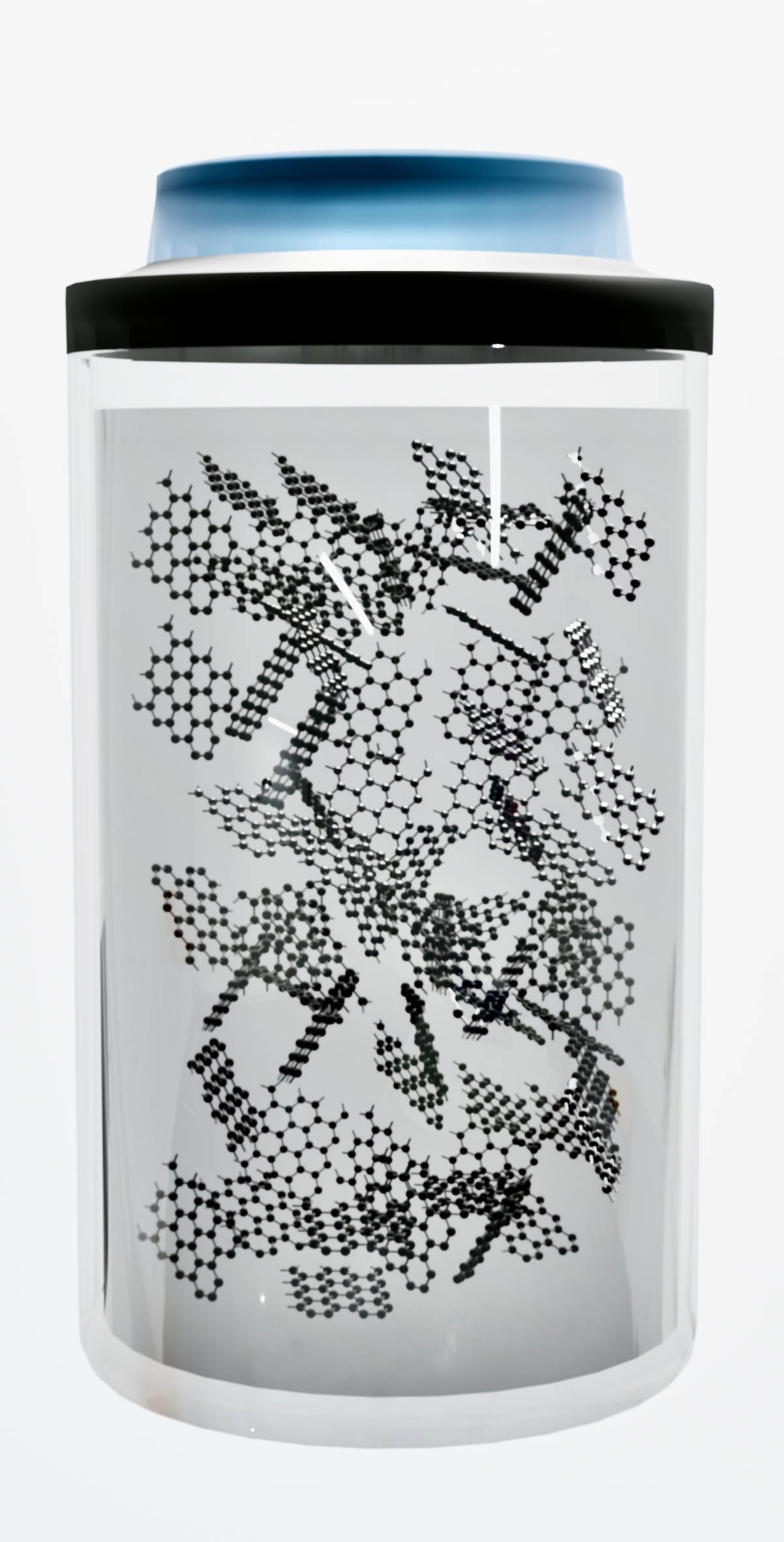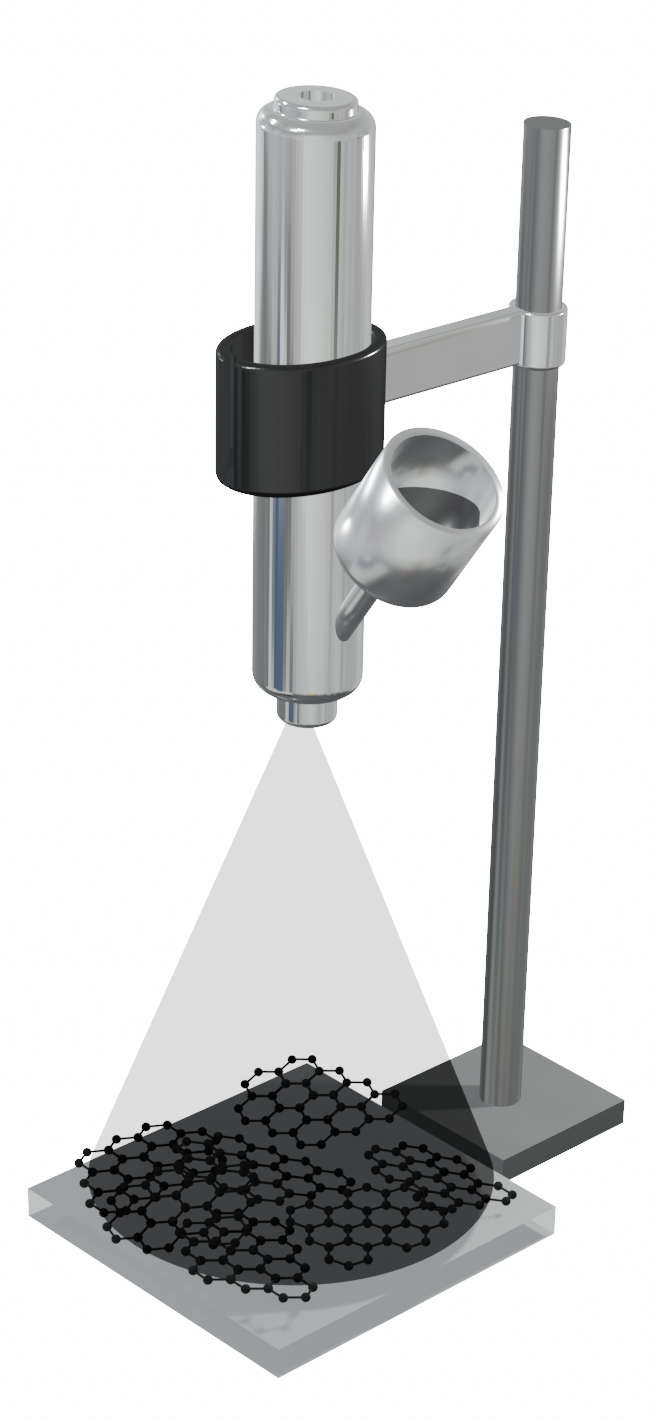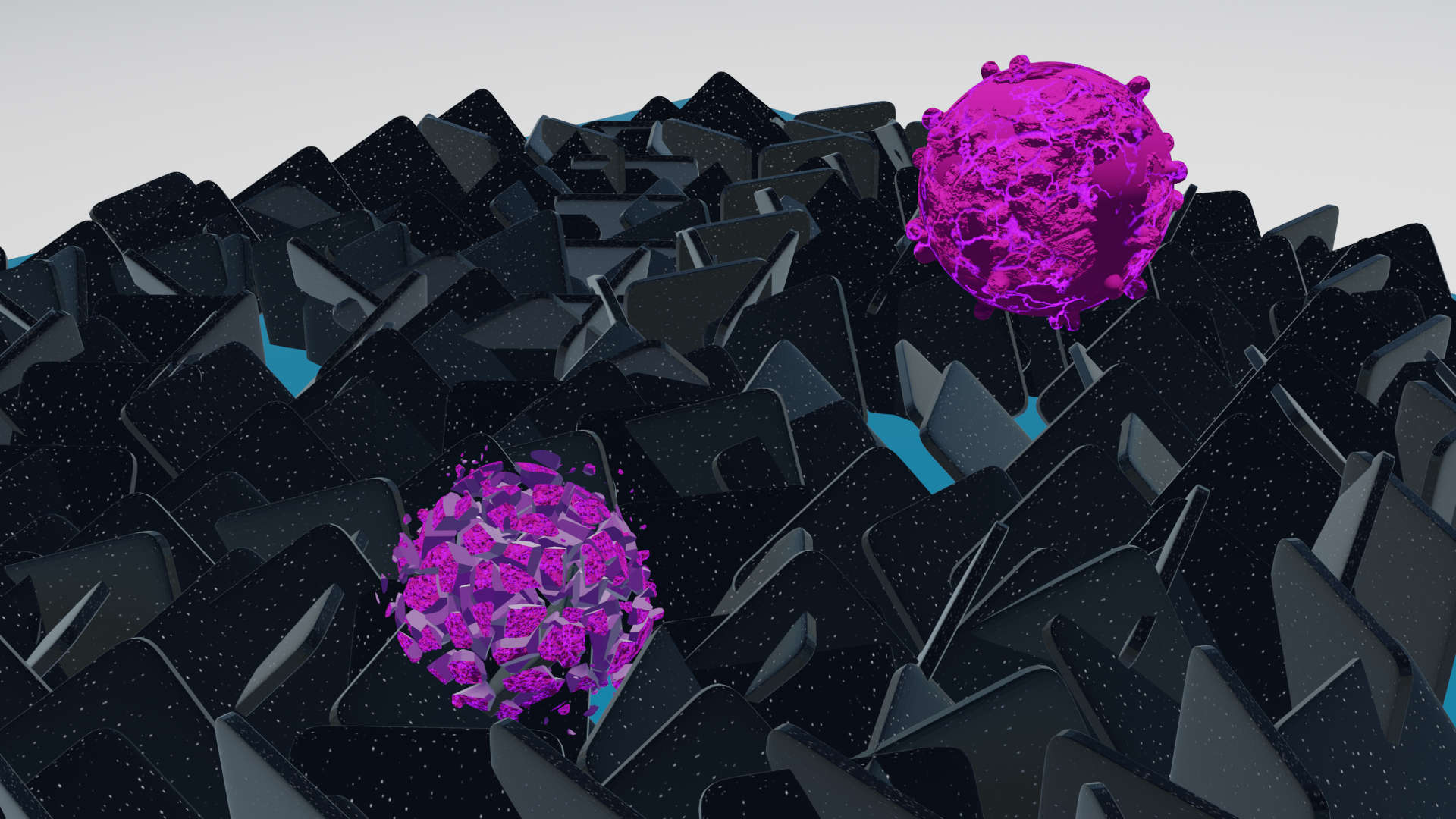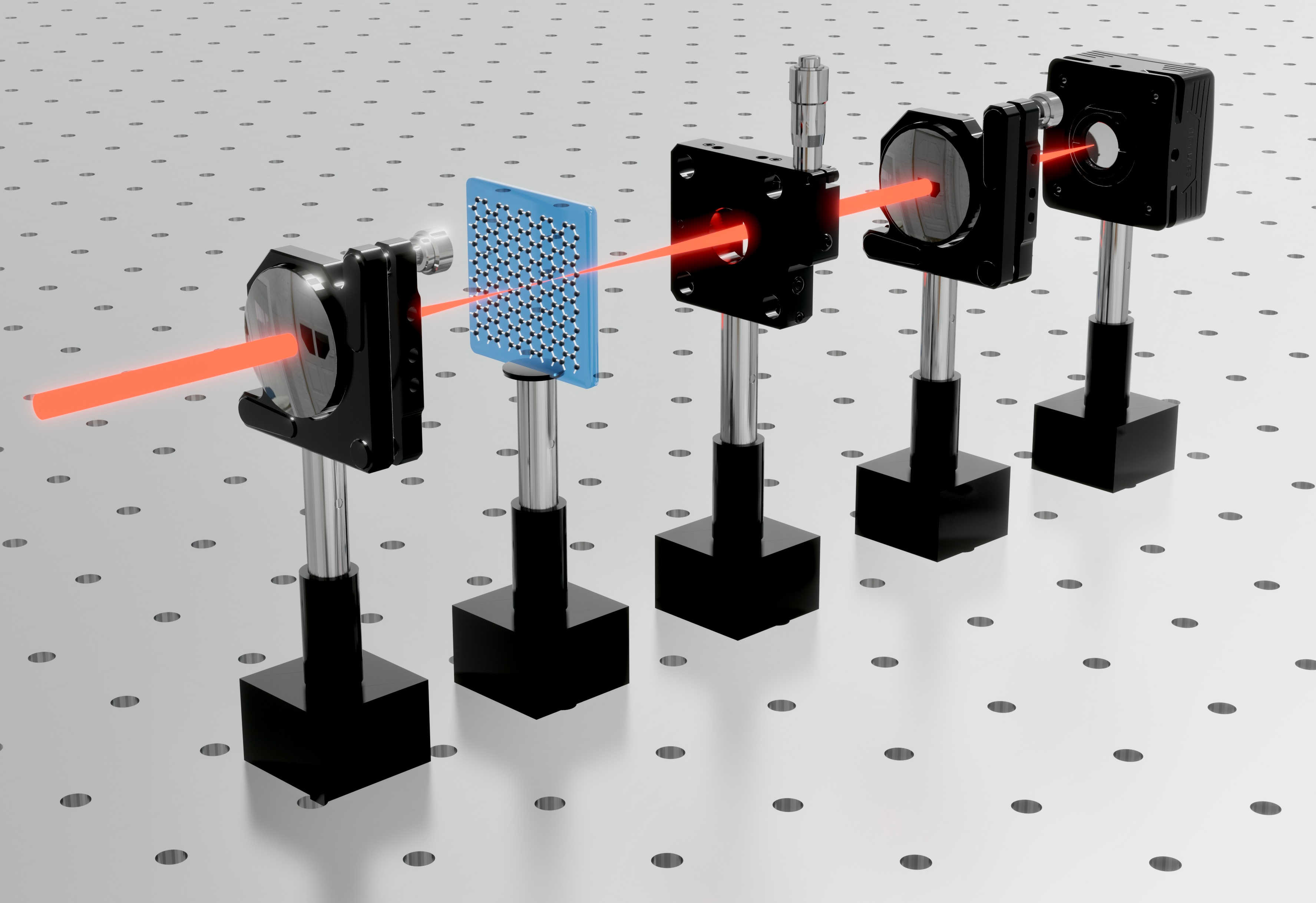Artwork
Images made by Xiangyu Zhou
Description by Ali Maleki: Superposition of two identical THz metasurfaces on polymer substrate to obtain specific spectral transmission properties.The double-stacked plasmonic structures presents flat-top transmission with ultra-wide bandpass filtering properties within the 0.5 - 5 THz region.
Image made by Guozheng Xu
Description by Wei Cui: Gratings etched at the surface of a nonlinear crystal enable a non-collinear propagation between a diffracted near-infrared pulse and a unaffected THz wave. As a result, new phase-matching conditions allow generation and detection of THz radiation over new spectral bandwidth with improved efficiency.
Image made by Guozheng Xu and Xiangyu Zhou
Description by Wei Cui: A broadband and sensitive time-resolved THz system is demonstrated using grating-assisted tilted-pulse-front phase matching scheme for efficient THz generation and detection.
Image made by Guozheng Xu
Description by Ali Maleki: Third harmonic generation of THz radiation in graphene is enhanced by the presence of a THz polarizer effectively enhancing the local field. The physical mechanism behind the high nonlinearity in graphene comes from the collective thermodynamic response of the Dirac electrons in the conduction band of graphene to the driving terahertz field.
Image made by Guozheng Xu and Xiangyu Zhou
Description by Ali Maleki: Configuration of the ultra-broadband spectral filters for sensitive monitoring of high harmonic generation in graphene by improving THz “signal to noise ratio”. In this configuration, a low-pass filter projects THz signal at a fundamental signal on a CVD graphene sample, thus leading to generation of a third harmonic signal due to the collective thermodynamic response of the background electrons in graphene. Then a highpass filter suppresses the fundamental signal and transmits generated third harmonic signal.
Image made by Guozheng Xu
Image made by Guozheng Xu and Xiangyu Zhou
Description by Dr. Aidan Baker-Murray: (a) Vial of colloidal nanomaterials such as graphene, prepared via liquid-phase exfoliation (LPE); (b) Spraycoating of LPE nanomaterial thin films onto arbitrary substrates; (c) Antipathogenic action of nanomaterial thin films.
Image made by Guozheng Xu
Description by Dr. Aidan Baker-Murray: Z-scan setup to measure the nonlinear optical properties of graphene deposited onto a glass substrate.
